Pawfect partners
Why a dose of 'Greyhound therapy' is good for the soul and the education of UQ veterinary science students
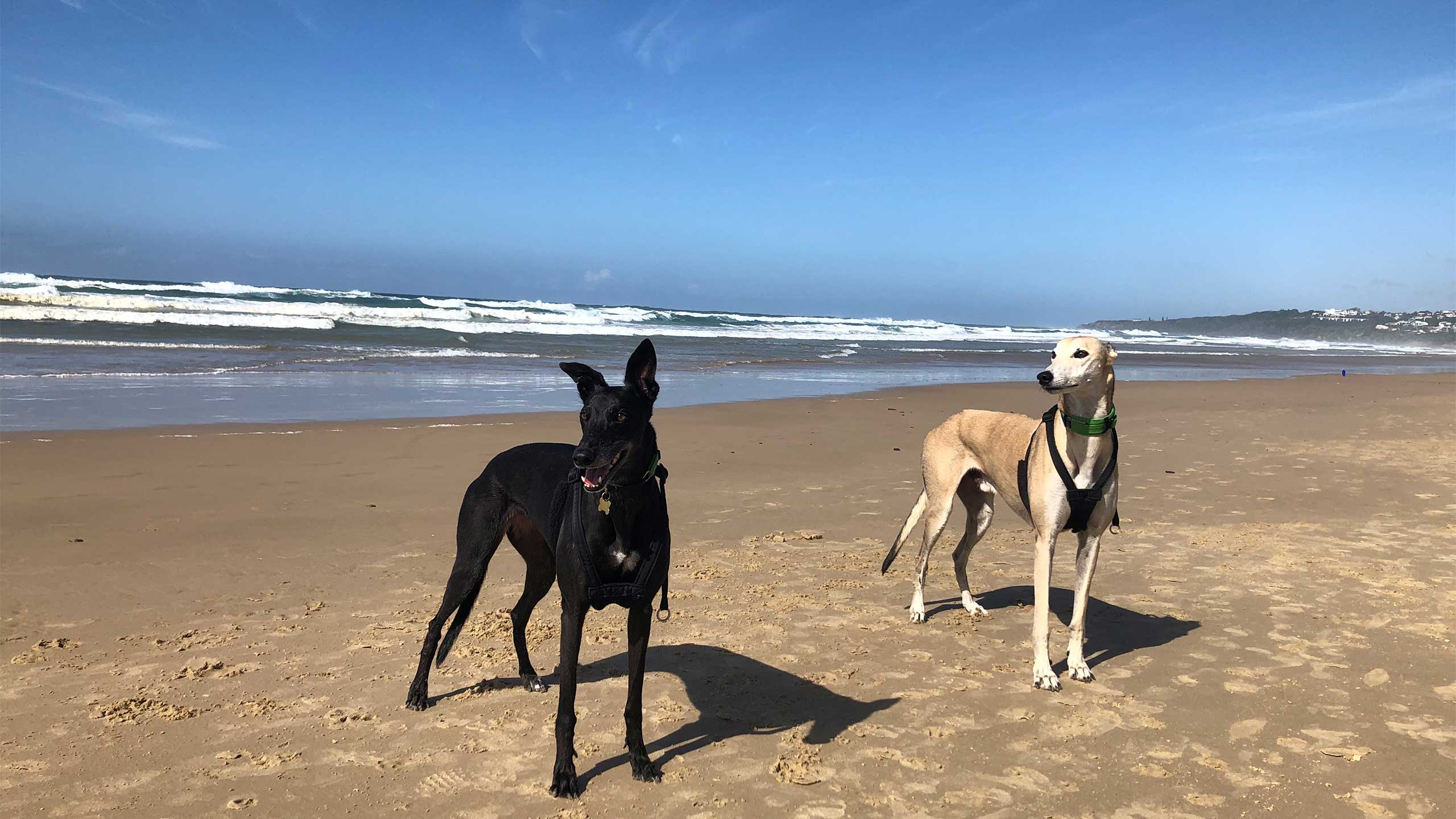
By Michael Jones
Ann Copsey calls it “Greyhound therapy”: the feeling of love, warmth and companionship that brightens her mood and is essential to maintaining her active lifestyle.
The 76-year-old has owned Greyhounds for many years and has always adored their “quiet, gentle and communicative” nature. She said life wouldn’t be the same without one – in fact, it would have made the last few years almost impossible to bear.
Ann’s husband Jim suffered an acquired brain injury almost 20 years ago, and she cared for him at home for many years before he moved into a care facility.
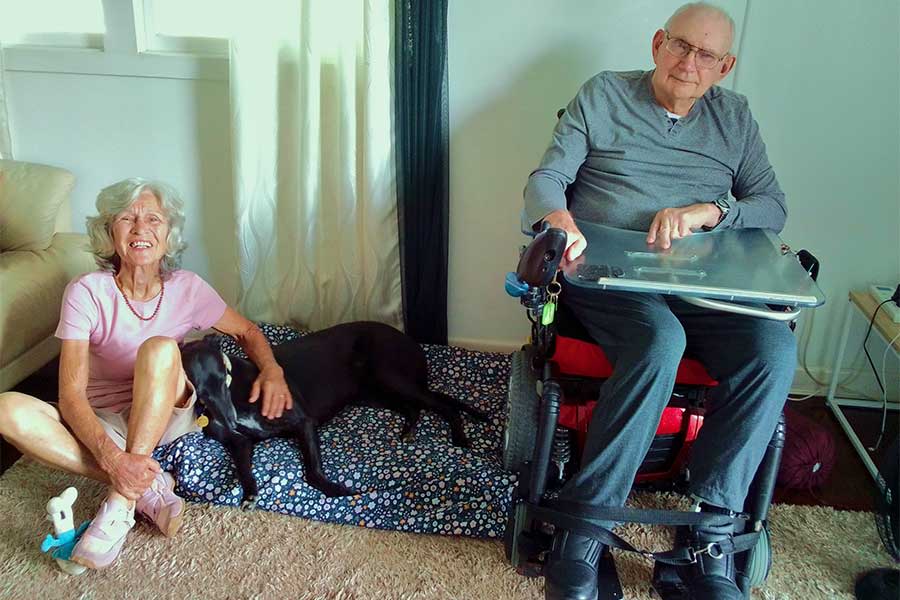
Ann Copsey visiting her husband Jim with Marcie the Greyhound. Image supplied
Ann Copsey visiting her husband Jim with Marcie the Greyhound. Image supplied
The couple’s Greyhound at the time, Josie, was an important part of her life. But when Josie passed away in 2017, it left a big hole.
“The house was quite empty when Josie passed away,” Ann said.
“We really loved her, and she was very popular around our neighbourhood. So popular that people brought flowers to the house when she died.”
Missing that love and companionship, Ann adopted Marcie – a beautiful black Greyhound – in 2018 through the Pets for Life adoption program at the UQ VETS Clinical Studies Centre.
She said adopting Marcie at that time in her life was invaluable, especially during the early days of the COVID-19 pandemic.
“The isolation periods were particularly tough, but I had Marcie,” Ann said.
“l called it ‘Greyhound therapy’ and it works, such is her social and gentle nature.”
And it’s not just Ann who’s benefitting.
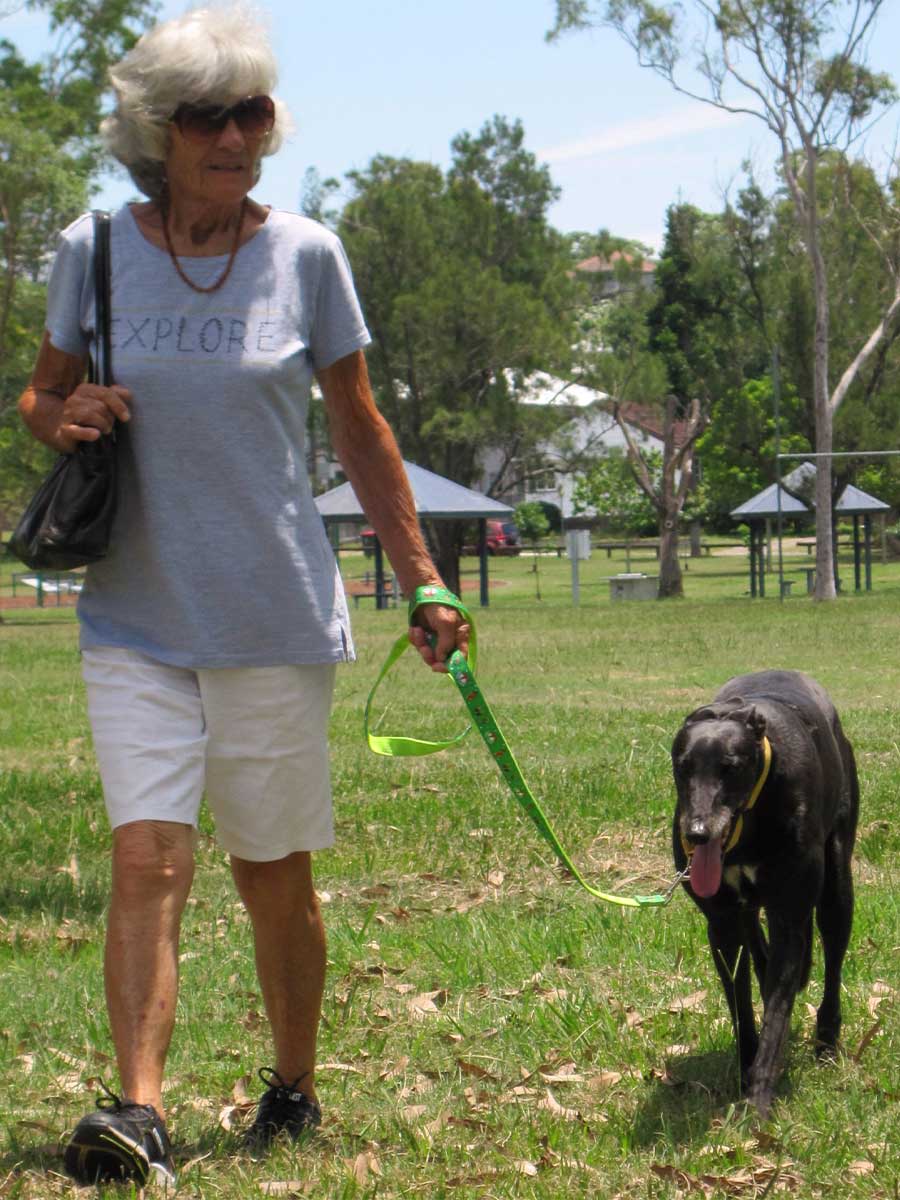
Ann Copsey walking Marcie around her neighbourhood, where Marcie receives lots of attention. Image supplied
Ann Copsey walking Marcie around her neighbourhood, where Marcie receives lots of attention. Image supplied
“I walk Marcie every morning and we are well known in the area. I get lots of waves and Marcie gets lots of pats and cuddles from passers-by,” she said.
Ann also regularly takes Marcie to visit Jim at the nursing home, where she is gentle and appreciated by the residents.
“Many people say that Marcie is lucky that I adopted her, but l say that we are both lucky to have each other.”
Marcie and Ann’s match is one of the many happy endings from UQ’s Pets for Life adoption program.
UQ VETS Behaviour Technician and Volunteer Coordinator Donna Marchiori (Bachelor of Veterinary Technology ’17, Bachelor of Science (Honours) ’20) remembers when Ann came to the Clinical Studies Centre to look at Greyhounds in 2018.
“They were a perfect match,” Donna said.
“Marcie (pictured) was a busy, active Greyhound and Ann is a very busy lady. One of Ann's first questions was, ‘does she like to go in the car?’ We didn't know the answer, as our Clinical Studies Centre dogs don't go out in cars, but Marcie jumped in like she'd always done it.”
While the Pets for Life adoption program gives unwanted pets a second chance in life, adoptions are a “lovely by-product” of the day-to-day functions at the Clinical Studies Centre, a UQ School of Veterinary Science clinical teaching facility based at UQ’s Gatton Campus.
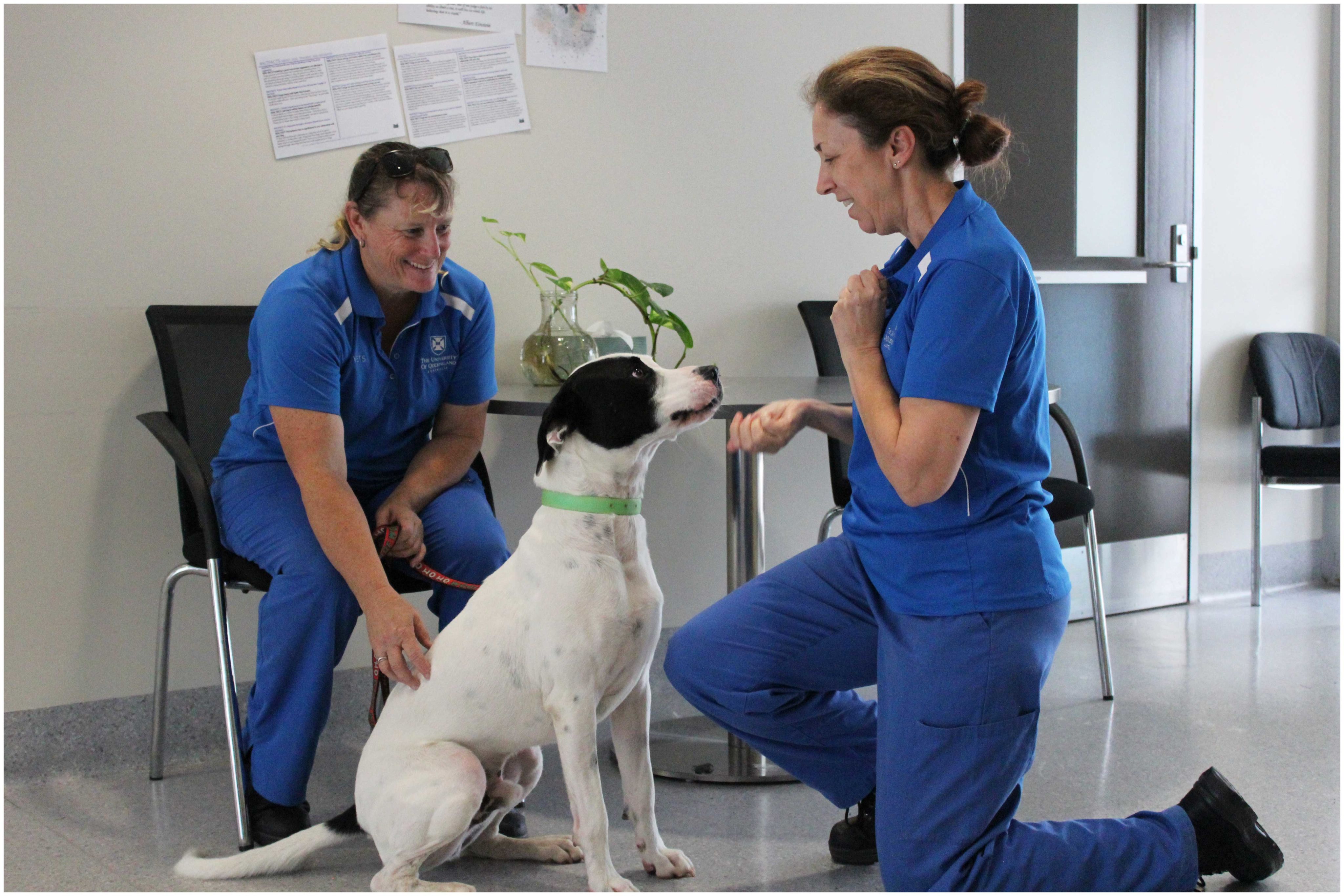
UQ VETS Senior Animal Technician Vicki Ratahi and Animal Behaviour Technician Donna Marchiori with crossbred teaching dog Ding at the UQ VETS Clinical Studies Centre.
UQ VETS Senior Animal Technician Vicki Ratahi and Animal Behaviour Technician Donna Marchiori with crossbred teaching dog Ding at the UQ VETS Clinical Studies Centre.
Donna said the animals housed at the Clinical Studies Centre are helping Veterinary Technology and Veterinary Science students learn about handling skills, animal behaviour and preparing for procedures.
“One of these skills is learning how to monitor and respond to an animal’s demeanour and emotional wellbeing during clinical examinations and interactions,” she said.
“Overwhelmed animals have compromised welfare, so teaching dogs are used to train students in various handling, or positive-reinforcement behavioural, techniques to reduce discomfort and stress during examinations.”
Donna said the value of these skills cannot be overstated.
“Learning a heap of theory is great but it often doesn’t make sense until students see it in action,” she said.
“Good handling comes from development of muscle memory which, like any mechanical skill, improves with practice. Becoming familiar with how an animal moves and using good observation skills to anticipate what an animal might do then becomes intuitive.
“I'm a big fan of trying to get students to see each animal as an individual – with its own feelings and responses – not just a learning tool. Some students become very task-focused and skip that part, so development or retention of empathy is important.”
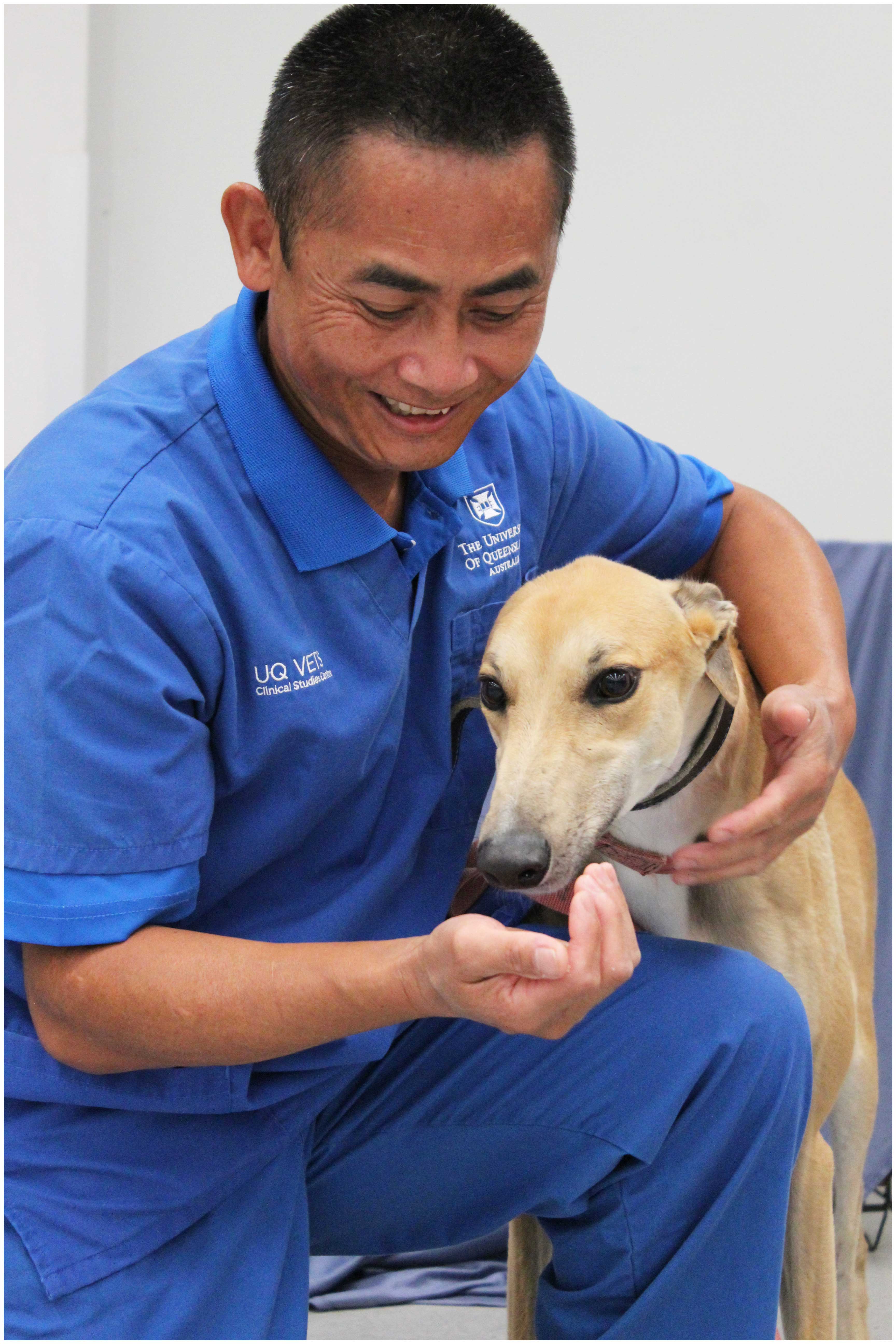
UQ VETS Senior Veterinary Technician Vithaya Chakitdee with Greyhound Harlow.
UQ VETS Senior Veterinary Technician Vithaya Chakitdee with Greyhound Harlow.
Many of the teaching animals are transferred to the Clinical Studies Centre from a couple of pounds in South East Queensland. Each time an animal is adopted, another is able to move into the colony.
“Our animals are listed with petrescue.com.au and promoted on the Clinical Studies Centre Facebook page,” Donna said.
“We are a small facility and cannot compete with the big organisations, but we don’t need to. We aren’t constantly taking in animals, and the ones we do take in need to stay with us for some time to help teach students.
“At times, adoptions are suspended until the end of teaching to avoid having insufficient animals for practical classes, which could potentially put more pressure on remaining animals.
“Some animals find forever homes very quickly but two years with us is not uncommon, especially for our blood-donor animals, which provide blood to patients at the UQ VETS Small Animal Hospital.
Background image supplied
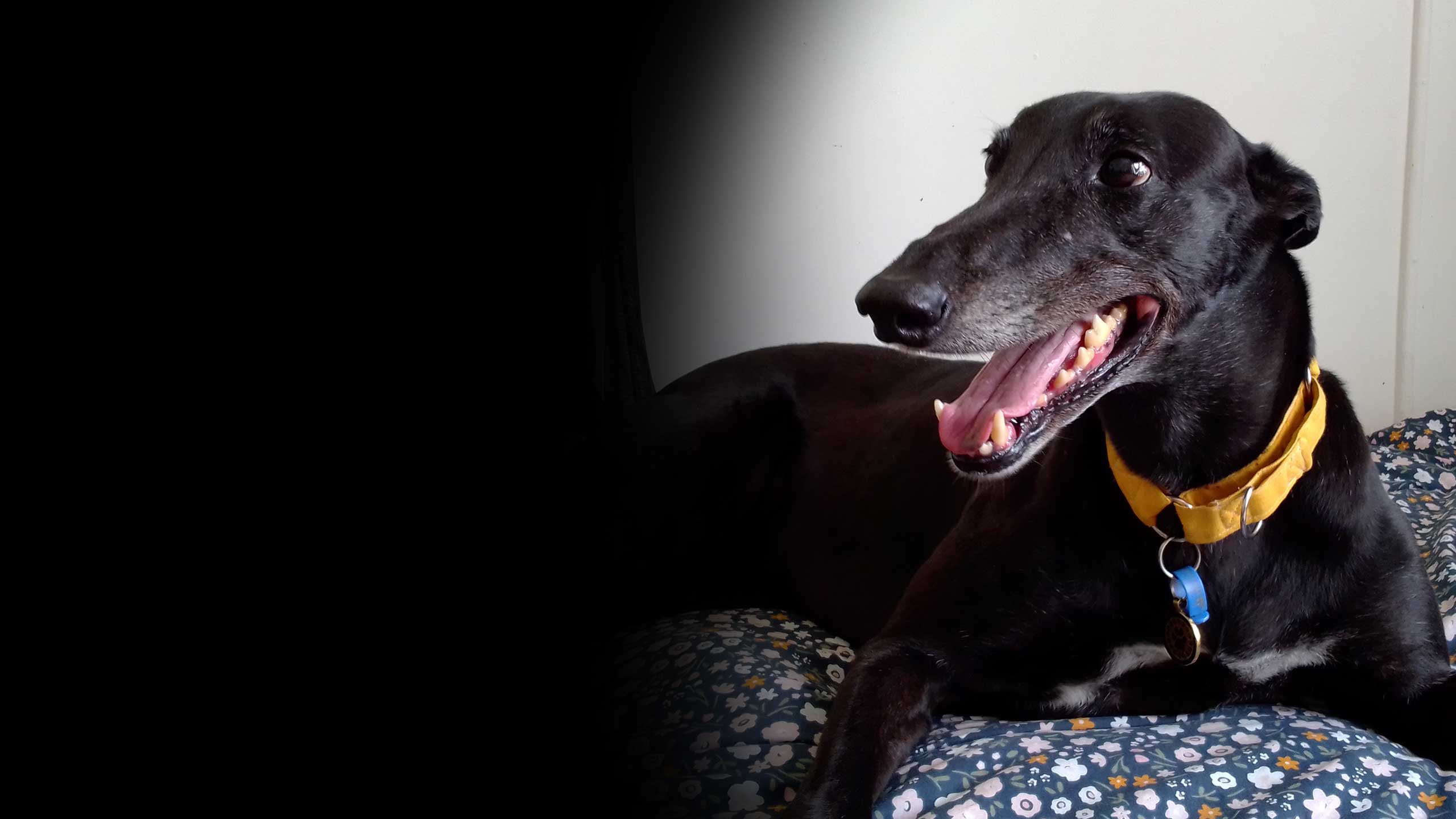
While some animals do find homes quickly, Donna said black Greyhounds – like Marcie – are among the hardest to re-home.
“Black is the most common colour in Greyhounds and highly common in other dogs and cats,” she said.
“Most people find black boring in crossbred animals and want something that stands out. Black dogs can also go grey early, so a 4-year-old dog can have a grey muzzle and face and look older than it is, which is another turnoff.”
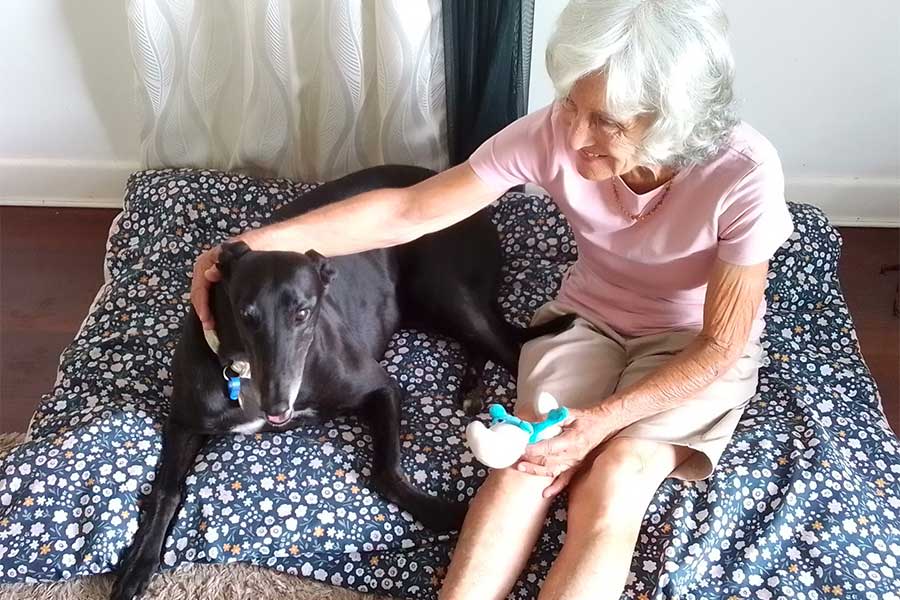
Ann Copsey and Marcie. Image supplied
Ann Copsey and Marcie. Image supplied
But to Ann, Marcie’s beautiful.
“As a pet there’s none better. She’s quiet, gentle and communicative through her body language, and we understand each other,” Ann said.
“She also has great instinct, acute hearing and vision. If she stops and looks alert, then I know something is around.
“When I met Marcie, I was told she was an ex-racing dog and that one morning she just refused to train. I thought, now that’s an intelligent dog!
“She came home and fitted in straight away. In fact, she may have picked me, I don’t know.”
Want to adopt a pet?
The UQ Pets for Life adoption program matches the need of the pet with the right owner. For more information on the adoption process, visit the Pets for Life adoption program website.
